
views
Finding Direction
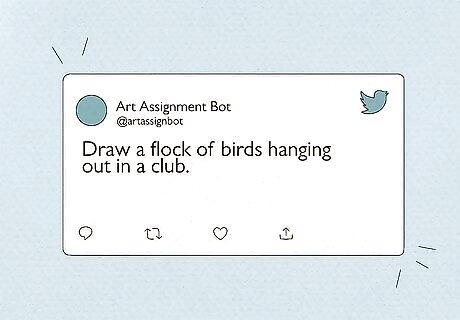
Use a prompt. There are a number of websites that have lists of prompts that will give you a task or subject to draw. You can find some of these with a quick internet search. You can also follow prompt feeds on social media, like the Art Assignment Bot (@artassignbot) on Twitter or Drawing-Prompt-s on Tumblr. Typical prompts include things like: “Draw a flock of birds hanging out in a club” “Draw something that terrifies you, but in a comical way” “Draw a restaurant you would not eat at” “Draw a fictional game show host” “Draw Official Inktober Prompts”
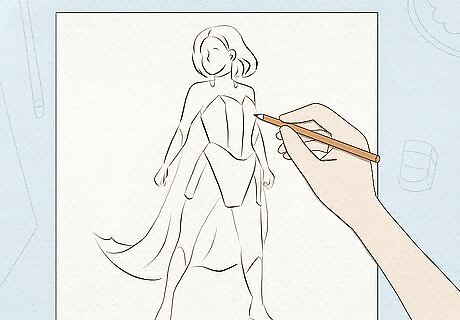
Work with a favorite category in a new way. You might feel in a rut if you draw the same sorts of things over and over again. If you like drawing in a particular category, like nature scenes or fantasy scenes, you can still work with this, just work with it from a new perspective. For instance, if you like doing figure drawing, you might draw someone: You know well in a place you’ve never seen them. Like you normally would except make one of their hands be unusually large. Reimagined as an unlikely superhero. As you imagine them to look fifty years from now.
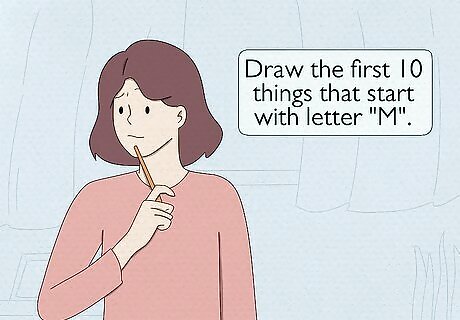
Set limits or parameters for your drawings. Sometimes, it’s the wide openness of the question “What should I draw?” that makes it so hard. If you force yourself to think “inside the box,” you might actually break through to create something interesting. Give yourself a couple of rules and start drawing according to them. For instance, you might draw the same thing 20 times, making one small change each time. Likewise, you might tell yourself to draw the first 10 things that start with the letter “M” that pop into your head, no matter what they are.
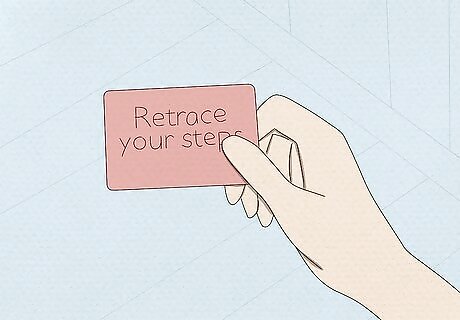
Try oblique strategies prompts. Oblique Strategies was originally a deck of cards developed by Brian Eno and Peter Schmidt. Each card has a unique direction meant to guide your work through lateral thinking or approaching a problem from an unusual perspective. There are now virtual versions of these cards freely available online. Choose a card and let it influence your drawing. Typical prompts include things like: ”Retrace your steps.” ”Make a sudden, destructive, unpredictable action. Incorporate.” ”Look closely at the most embarrassing details and amplify them.”
Trying Different Drawing Techniques

Look at your surroundings for inspiration. There are so many things around you. Look at people walking by on the street to just basic furniture in your home. Looking around will eventually make you come up with one or two ideas on what to draw. It's easy if the object or person is close to you, because then you have an exact copy of the real thing when you are drawing. If you have a device with you, you can take a picture of it and have it right next to you to make it less difficult. Go outside with your phone and take close up shots of leaves, flowers, branches and any textures that you find interesting. Using your photos as reference, draw the way the lines intersect with each other.
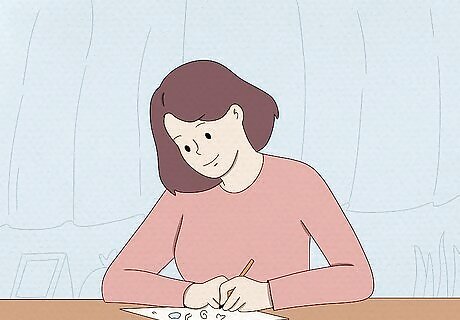
Doodle. If you can't think of what to draw, just put pen to paper and make it move. Draw lines, simple shapes, scribbles, cartoon characters, stick people, or anything else that comes out. The physical act of moving your hands to create can reenergize you. Doodling allows you to think and create in a non-judgmental, almost subconscious way. Draw slowly and meditatively and you may come up with an interesting abstract composition!

Do quick gesture drawings. These are the bread and butter of life drawing, but you can use them in other situations as well. Set a timer for one minute and try to draw the entirety of a figure or object. You will have work quickly, forcing you to capture just the essence of your subject. Do several of these drawings in a five or ten minute period. You can even use online images as subjects for gesture drawings.

Draw from photographs. Photographs can be great as the basis of drawings, especially when you’re out of ideas. If there's nothing around to draw, go looking for photographs that might be interesting or fresh to draw. Tell yourself that you will draw whatever you find on page three of a magazine, for instance, no matter what it is.

Copy the masters. If you’re stuck and don’t know what to draw, you can always copy what someone else has already done! Trying to recreate the work of a previous artist not only solves the problem of what to draw, it can also be a great opportunity to learn. Consider copying the work of the Old Masters like Raphael or Rembrandt, as well as new ones like Frieda Kahlo or Francis Bacon. Many museums allow you to sketch on site. Grab your sketchpad and a pencil, and draw a work that inspires you.
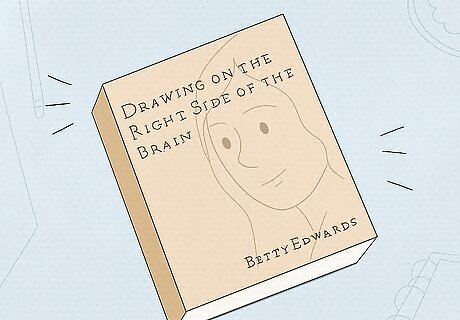
Consult a book on drawing. Reading a book about drawing might seem like the path to boredom rather than creativity, but if you’re stuck, one of these can be a lifeline. Even if you’re an experienced artist, looking at the fundamentals and trying basic drawing exercises can be refreshing and lead to great ideas. Some classic books on drawing include: Drawing on the Right Side of the Brain (Betty Edwards), Drawing for the Absolute and Utter Beginner (Claire Watson Garcia) Elements of Drawing (John Ruskin) The Practice and Science of Drawing (Harold Speed), Human Anatomy for Artists: The Elements of Form (Eliot Goldfinger) What to Draw and How to Draw It (E.G. Lutz)
Developing Your Drawing Habits

Try another activity before starting to draw. Improve Your Reading Skills, listen to music, dance, or do some other creative activity. Take a walk around the block. Clearing your mind can make you feel creatively refreshed. You can also look to these as sources of input to get drawing ideas. For instance: While walking around your neighborhood, look for a seemingly banal object or scene that might make a great subject for a drawing. Think about what images are suggested by the music you are listening to, and draw them.

Don’t limit yourself to one medium. Trying out a new medium can be invigorating if you're stuck and don't know what to draw. Even revisiting familiar subjects can seem newly inspiring in a fresh medium. Try a variety of media, like: Pencils Charcoal Pastels Pens Markers Crayons Conte crayons
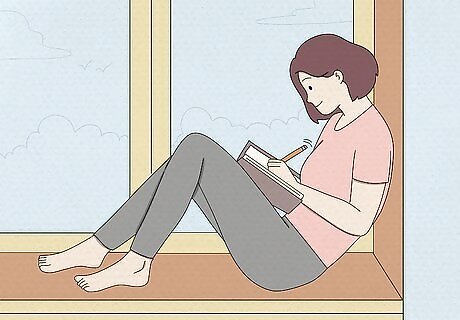
Draw everyday. Push through and draw something, even on the days when you can’t seem to think of a good idea. Even if you don’t feel like what you draw on a given day is any good, don’t give up. By getting in the habit of drawing regularly, you will be more likely to produce good work than if you wait for inspiration to strike.

















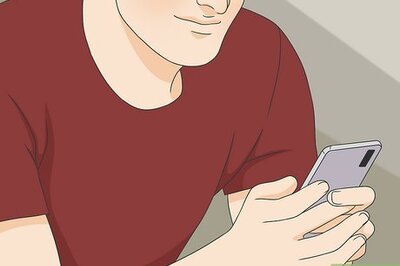


Comments
0 comment